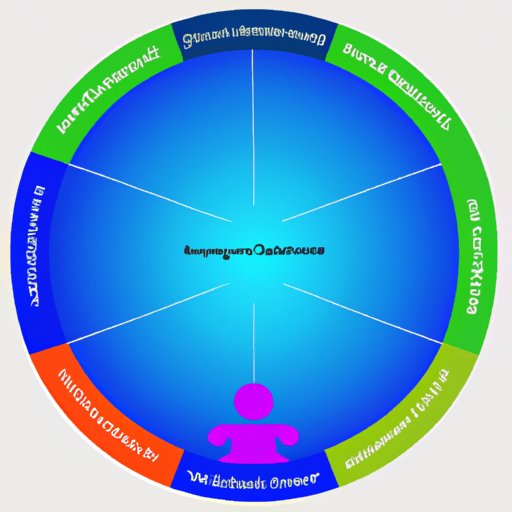Introduction
Avoidance is a common psychological phenomenon characterized by the tendency to actively or passively avoid situations that evoke fear, anxiety, or other difficult emotions. It can manifest itself in many ways, such as procrastinating, avoiding social interactions, or avoiding new experiences. While avoidance may seem like an effective coping strategy in the short term, it can lead to long-term difficulties if it is not addressed. In this article, we will explore strategies to help someone stop being avoidant and foster greater emotional well-being.

Identify and Challenge Your Negative Thoughts
One of the key steps to overcoming avoidance is to recognize and challenge negative thoughts. This means acknowledging the thoughts and feelings that are driving your avoidance, and then questioning their validity. Here are some tips for doing this:
- Acknowledge your thoughts. Acknowledging and accepting your thoughts, even if they are uncomfortable or unpleasant, is an important step towards understanding them.
- Recognize irrational thinking patterns. Many people engage in unhelpful thinking patterns such as catastrophizing, black-and-white thinking, and personalizing. Recognizing these patterns can help you identify and replace them with more helpful thoughts.
- Reframe negative thought patterns. Once you have identified and challenged your negative thoughts, you can begin to reframe them into more positive ones. This may involve looking at situations from a different perspective or finding the silver lining in difficult experiences.

Reach Out to Supportive People
Having a strong support system is essential for overcoming avoidance. Connecting with supportive people who understand and accept you can be a powerful antidote to the loneliness and isolation that often accompanies avoidance. Here are some tips for building a strong support system:
- Find a support system. Look for friends, family members, or professionals who can provide comfort and understanding.
- Make connections with others. Reach out to people who share similar interests or experiences. This could include joining a support group or online community.
- Talk about your feelings. Sharing your feelings with supportive people can help you feel less alone and give you a sense of safety and security.
Practice Self-Compassion
Self-compassion is an important part of overcoming avoidance. It involves treating yourself with kindness and understanding, rather than judgment and criticism. Here are some tips for practicing self-compassion:
- Acknowledge your strengths and weaknesses. Accepting your strengths and weaknesses can help you practice self-compassion and foster greater self-acceptance.
- Practice self-care. Taking care of yourself is essential for managing stress and difficult emotions. This could include activities such as getting enough sleep, eating healthy meals, and exercising.
- Forgive yourself. Mistakes are inevitable, so it’s important to forgive yourself and move forward. Remember that everyone makes mistakes and focus on what you can learn from them.

Give Yourself Time to Adjust
Overcoming avoidance can take time, so it is important to give yourself time to adjust. Here are some tips for giving yourself the time you need:
- Take time to reflect. Take time to think about your progress and how far you have come. This can help you stay motivated and focused.
- Allow yourself to feel uncomfortable. Feeling uncomfortable is a normal part of change, so it’s important to allow yourself to feel it without judgment.
- Celebrate small successes. Celebrating small successes can help you stay motivated and give you a sense of accomplishment.
Set Healthy Boundaries with Others
Healthy boundaries are essential for overcoming avoidance. Setting boundaries can help you manage your time and energy and protect yourself from people or situations that may be draining. Here are some tips for setting healthy boundaries:
- Assert your needs. Communicate your needs clearly and assertively to ensure that they are respected.
- Respect the needs of others. Just as it is important to respect your own needs, it is also important to respect the needs of others.
- Be honest with yourself and others. Be honest about your feelings and needs and communicate them openly and honestly.
Engage in Gradual Exposure
Gradual exposure is an effective technique for overcoming avoidance. This involves gradually exposing yourself to the situations or people that make you anxious in order to build up your tolerance and confidence. Here are some tips for engaging in gradual exposure:
- Start small. Start with something small and manageable and work your way up to more challenging tasks.
- Take your time. Don’t rush yourself and allow yourself to take breaks when needed.
- Have a plan. Have a plan in place to help you stay on track and work towards your goals.
Conclusion
In conclusion, overcoming avoidance is possible with the right strategies. By identifying and challenging negative thoughts, reaching out to supportive people, practicing self-compassion, setting healthy boundaries, and engaging in gradual exposure, you can begin to overcome your avoidance and foster greater emotional well-being. Remember to take things one step at a time and celebrate your successes along the way.
(Note: Is this article not meeting your expectations? Do you have knowledge or insights to share? Unlock new opportunities and expand your reach by joining our authors team. Click Registration to join us and share your expertise with our readers.)
